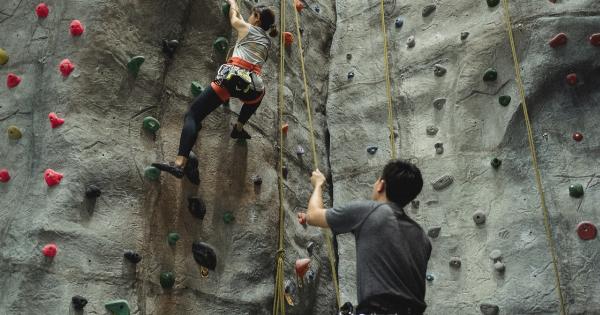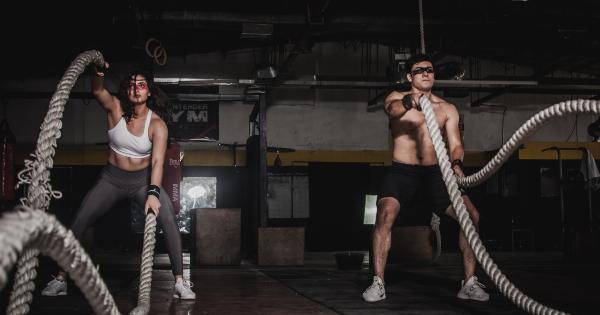Fractures, commonly known as broken bones, can be painful and debilitating. They can occur due to a variety of reasons, including accidents, falls, and weak bones.
However, regular exercise plays a crucial role in preventing fractures and maintaining healthy bones. In this article, we will explore the importance of exercise in fracture prevention and provide essential information on how to exercise effectively for strong and resilient bones.
Understanding Bone Health
Before delving into the specifics of exercise for fracture prevention, it is essential to have a basic understanding of bone health. Our bones are living tissues that constantly break down and rebuild.
This process is known as bone remodeling and is facilitated by cells called osteoblasts and osteoclasts.
As we age, the balance between bone breakdown and formation may become disrupted, resulting in weaker bones. Conditions such as osteoporosis can significantly increase the risk of fractures.
It is crucial to take proactive measures to maintain optimal bone health.
The Role of Exercise in Fracture Prevention
Regular exercise is one of the most effective strategies for preventing fractures. Engaging in weight-bearing exercises helps promote bone strength, density, and overall bone health.
When we subject our bones to weight and impact, it stimulates the osteoblasts to increase bone formation and strengthen the existing bone structure.
Exercise also enhances muscle strength and balance, which are essential for preventing falls that can lead to fractures. Strong muscles help support and protect the bones, reducing the risk of injury.
Additionally, exercises that improve balance and coordination enhance proprioception, enabling us to react more effectively if we stumble or lose our footing.
It is important to note that different types of exercise offer various benefits when it comes to fracture prevention. Let’s explore some of the most effective exercises for strengthening bones and reducing the risk of fractures.
Weight-Bearing Exercises
Weight-bearing exercises are activities that force you to work against gravity. These exercises facilitate bone remodeling and help to strengthen bones. Some of the best weight-bearing exercises for fracture prevention include:.
1. Walking: Walking is a low-impact, accessible exercise that benefits bone health. Aim for brisk walks for at least 30 minutes a day to promote bone strength.
2. Jogging/Running: Higher-impact activities like jogging and running are excellent for stimulating bone formation and increasing bone density.
However, ensure you have proper footwear and gradually increase the intensity to minimize the risk of injuries.
3. Dancing: Dancing not only promotes cardiovascular fitness but also helps build strong bones. The combination of footwork, jumps, and turns places stress on the bones, making them stronger over time.
4. Stair Climbing: Whether using a staircase or a step climber machine, stair climbing is an effective weight-bearing exercise for the lower body that strengthens bones in the hips, legs, and spine.
These weight-bearing exercises should be performed regularly to maximize their bone-strengthening benefits.
However, it is crucial to listen to your body and consult with a healthcare professional if you have any underlying medical conditions or concerns.
Resistance Training
Combining weight-bearing exercises with resistance training helps build muscle strength, further supporting bone health. Resistance training involves using external resistance, such as dumbbells or resistance bands, to challenge the muscles.
1. Squats: Squats are a versatile exercise that targets multiple muscle groups, including the glutes, quadriceps, and hamstrings. They help strengthen the bones in the hips and legs while also improving balance.
2. Lunges: Lunges are effective for building lower body strength, targeting the quadriceps, hamstrings, and glutes. Additionally, they improve stability and can be modified to suit different fitness levels.
3. Push-ups: Push-ups primarily target the muscles in the chest, shoulders, and arms. By strengthening these muscles, you provide better support for the bones in the upper body.
4. Planks: Planks are a full-body exercise that engages the core, upper body, and lower body muscles. A strong core helps improve stability and balance, reducing the risk of falls.
Include resistance training in your exercise routine at least two to three times per week. Start with lighter weights and gradually increase the resistance as your strength improves.
If you are unsure about proper technique or form, consider working with a certified personal trainer to ensure your safety and effectiveness.
Balance and Flexibility Exercises
In addition to weight-bearing exercises and resistance training, focusing on balance and flexibility is crucial for preventing falls and fractures.
1. Yoga: Yoga combines various poses, movements, and breathing exercises to improve flexibility, balance, and overall body awareness. Regular yoga practice can help enhance proprioception and reduce the risk of falls.
2. Tai Chi: Tai Chi is a mind-body practice that involves slow, controlled movements combined with deep breathing and meditation. It improves balance, stability, and coordination, making it an excellent exercise for fracture prevention.
3. Balance Exercises: Simple exercises like standing on one leg or walking heel-to-toe help improve balance and proprioception.
These exercises can easily be incorporated into your daily routine and have a significant impact on fall prevention.
By incorporating balance and flexibility exercises into your routine, you improve your ability to react and maintain stability in various situations, reducing the likelihood of falls and fractures.
Considerations and Precautions
While exercise is highly beneficial for preventing fractures, it is essential to take certain considerations and precautions:.
1. Start Slowly: If you are new to exercise or have been inactive for a while, start slowly and gradually increase the intensity and duration to prevent overexertion and minimize the risk of injuries.
2. Seek Guidance: If you have any underlying medical conditions or concerns, consult with a healthcare professional or certified exercise specialist.
They can provide personalized recommendations and modifications based on your specific needs.
3. Use Proper Equipment: Wear appropriate footwear and supportive gear when engaging in weight-bearing exercises or other physical activities. This helps minimize the risk of accidents and injuries.
4. Maintain Proper Form: Performing exercises with proper form is crucial for preventing injuries. If you are unsure about technique, consider working with a qualified fitness professional who can guide you through correct form.
5. Stay Consistent: Consistency is key when it comes to maintaining strong and healthy bones. Aim for regular exercise sessions, gradually increasing the intensity as your fitness level improves.
Conclusion
Preventing fractures through exercise is an effective and proactive approach to maintain optimal bone health.
Weight-bearing exercises, resistance training, balance, and flexibility exercises all play significant roles in strengthening bones, improving muscle strength, and reducing the risk of falls.
Remember to start slowly, seek guidance if needed, use proper equipment, maintain correct form, and stay consistent with your exercise routine.
By prioritizing regular exercise and incorporating a variety of exercises into your routine, you can significantly reduce the risk of fractures and enjoy stronger, healthier bones for years to come.




























